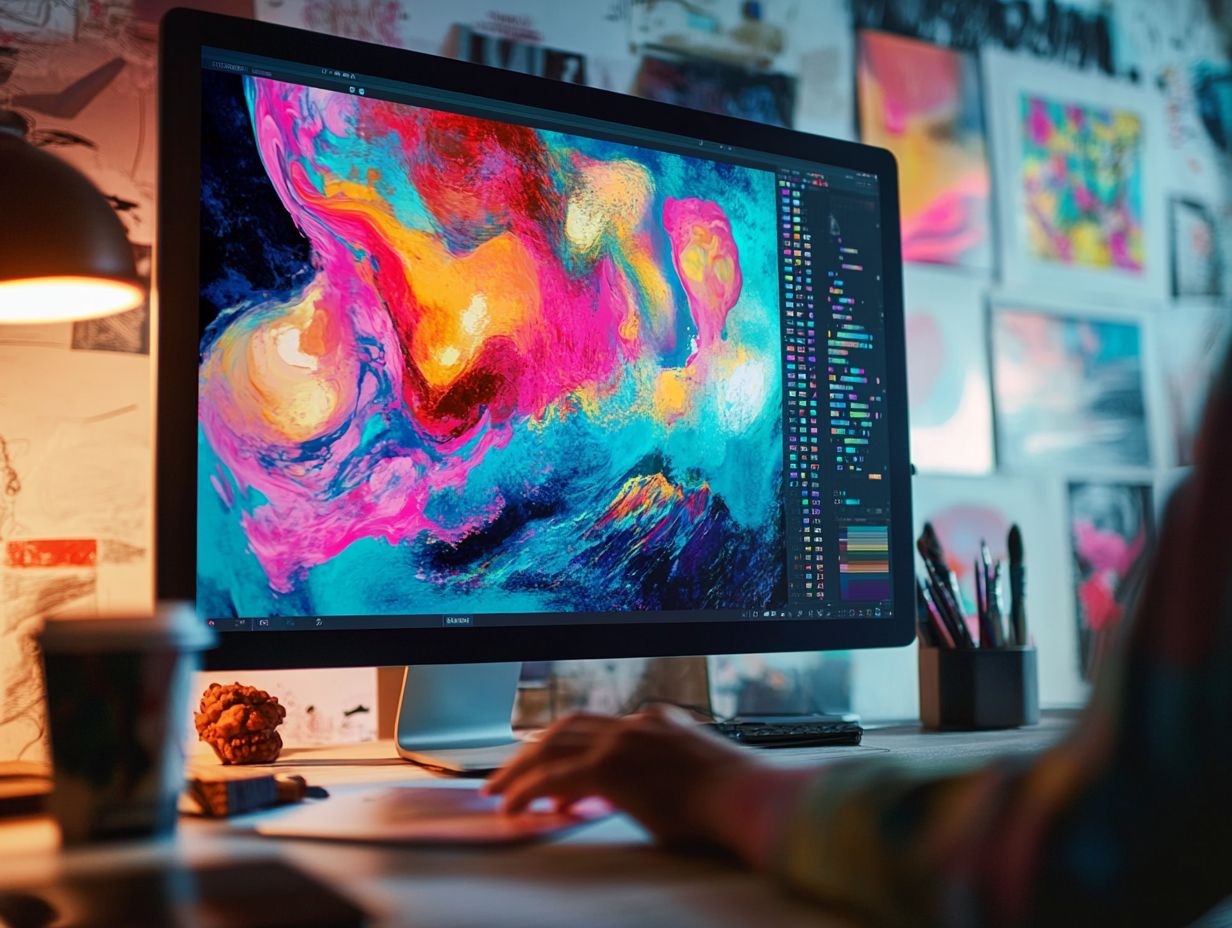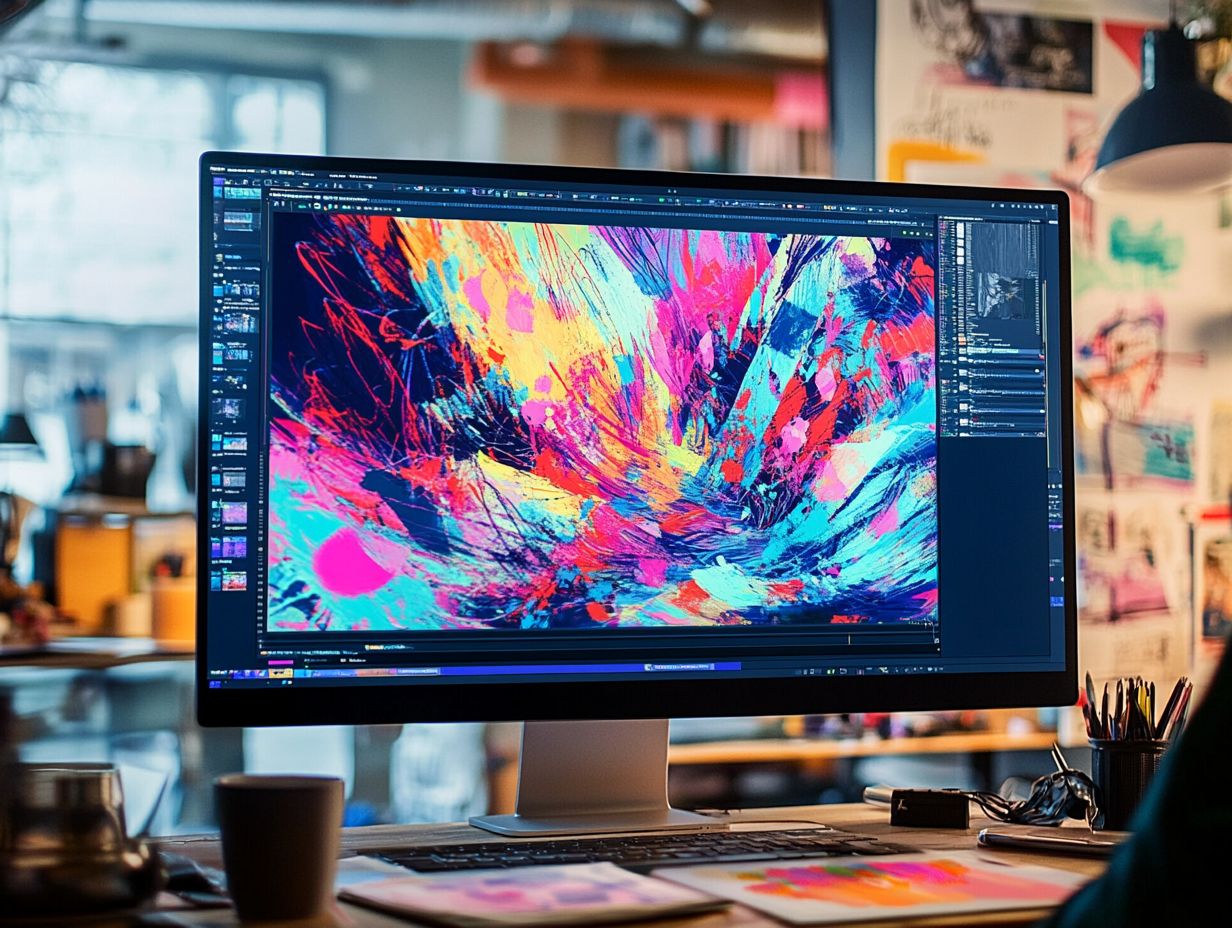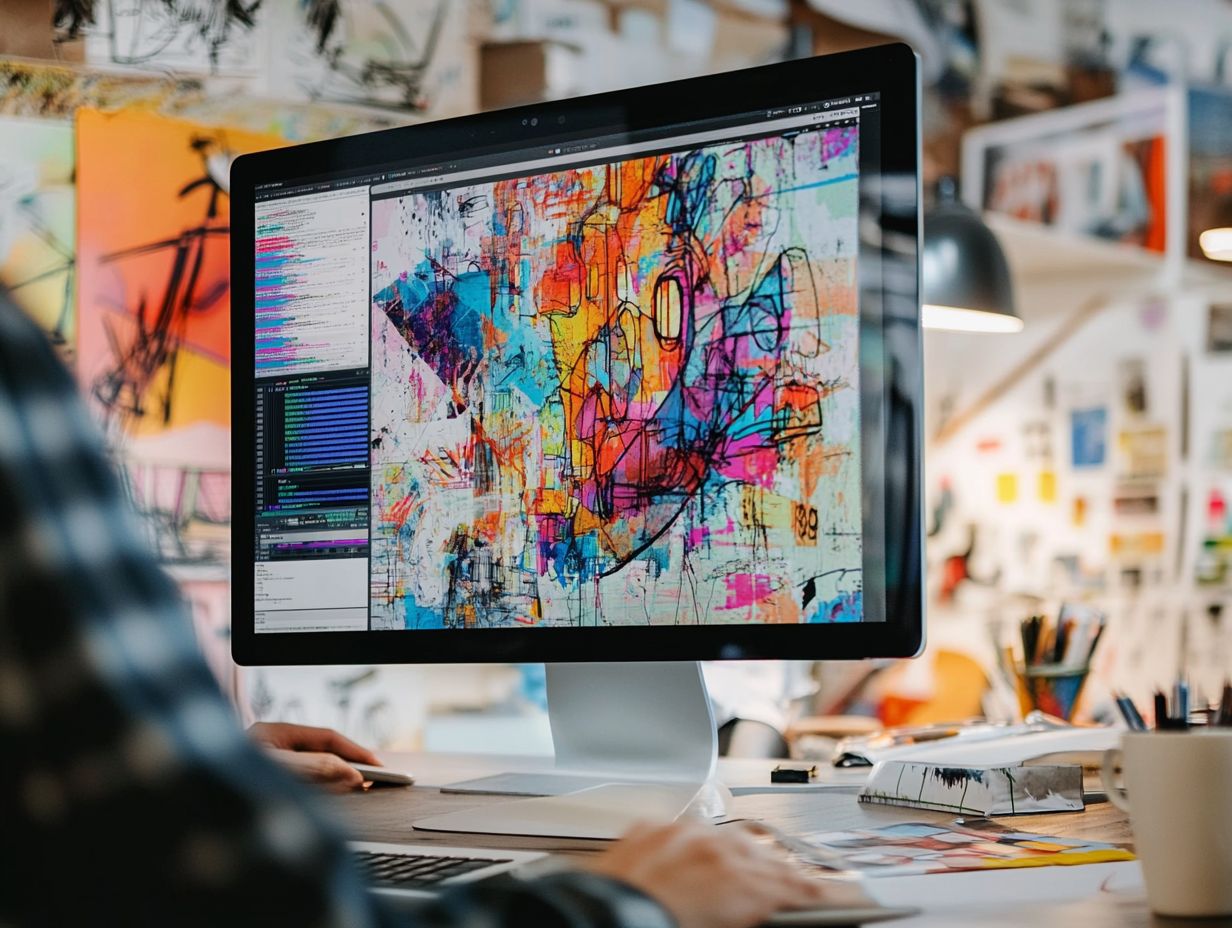Image generators have transformed the way visuals are created and manipulated, combining technology and art in a way that appeals to both professionals and enthusiasts.
This article examines the different types of image generators, including Generative Adversarial Networks (GANs), style transfer techniques, and autoencoders.
It will discuss the benefits and limitations of these tools, highlight some of the top options available on the market, and offer guidance on selecting the best one to meet your creative needs.
Explore how technology can support your artistic journey.
What are AI Image Generators?

AI image generators are advanced tools powered by artificial intelligence that use deep learning and neural networks to create images based on textual prompts or other inputs. These systems utilize sophisticated algorithms, such as Generative Adversarial Networks (GANs), to produce high-quality visual content. This allows users to explore various creative applications of AI, including digital art and marketing visuals.
By converting simple text descriptions into detailed illustrations, these generators provide artists and designers with opportunities to expand their work in generative art. The capabilities of image synthesis introduce new possibilities for innovation, making design processes quicker and more accessible.
Whether for producing unique artwork, developing conceptual designs, or creating product mock-ups, AI image generators enhance the user experience by streamlining complex tasks.
They also act as collaborative tools; artists can refine their projects through iterative feedback based on AI-generated suggestions, promoting a productive interaction between human creativity and machine learning.
Types of AI Image Generators
There are various types of AI image generators, each utilizing different methodologies to create visual content.
These include:
- Generative Adversarial Networks (GANs)
- Style Transfer techniques
- Autoencoders
The methods differ in their applications, customization options, and the artistic styles they can produce, accommodating a wide array of user preferences and creative requirements.
Generative Adversarial Networks (GANs)
Generative Adversarial Networks (GANs) are a significant class of AI models that consist of two neural networks—the generator and the discriminator—that work together to produce high-quality images through a process of competition and feedback. This deep learning technique has transformed image synthesis by enabling the creation of photorealistic images and advanced artistic visuals.
The generator creates images from random noise and continuously improves its output based on the discriminator’s feedback, which evaluates how authentic the generated images are compared to real ones. This dual architecture not only enhances the resolution of the outputs but also increases the versatility of applications, which range from fashion design to video game assets and film production.
The ability to manipulate images with precision allows artists and designers to explore creative possibilities that were previously thought to be unattainable. Additionally, the extensive neural network capabilities that underpin GANs support significant advancements across various fields, including virtual reality and medical imaging.
Style Transfer
Style Transfer is an AI technique that enables users to apply the stylistic features of one image to the content of another, effectively blending artistic styles with digital art creation. This method has gained popularity among graphic designers and photographers for producing unique visual content that is creative and engaging.
By using advanced algorithms, this technology transforms ordinary images into impressive works of art, drawing inspiration from various artistic sources, including classic paintings and modern graphic motifs.
Graphic designers take advantage of these customization features to improve their projects, allowing for a smooth integration of different output styles that match their vision.
The capability to manipulate visual aesthetics has opened new avenues for creative exploration, allowing artists to experiment with new ideas. This approach not only enhances traditional practices but also acts as a valuable tool for storytelling and branding in a visually oriented world, where impactful imagery is essential for effective communication.
Autoencoders

Autoencoders are a type of neural network designed to learn efficient representations of data. In the context of image generation, they can be used to reconstruct images from low-dimensional representations, which aids in creating new visual content. This approach improves the user experience by enabling the generation of diverse images with high accuracy.
What distinguishes autoencoders is their architecture, typically consisting of an encoder and a decoder that work together to compress and then reconstruct the input data. This streamlined process simplifies the workflow and allows for significant customization, addressing the specific needs of various industries, including fashion and healthcare.
Their innovative applications are rapidly developing, taking advantage of the algorithm’s flexibility to produce tailored visual outputs. For example, businesses can utilize autoencoders for branding and marketing strategies, generating unique imagery that aligns with their target audience while maintaining efficiency and cost-effectiveness.
Benefits and Limitations of AI Image Generators
AI image generators provide various benefits, such as improving user experience, enhancing accessibility, and producing high-quality images that can be customized for specific requirements. This makes them valuable tools for both creative professionals and hobbyists.
However, users should also be aware of the limitations associated with these tools, which include potential copyright issues and ethical considerations in their use.
Advantages of Using AI Image Generators
The advantages of using AI image generators include the ability to streamline creative projects, improve visual content quality, and offer users innovative features that simplify the design workflow. These tools also enable users to experiment with various artistic styles and image prompts, resulting in richer and more diverse outputs.
These advanced software capabilities lead to increased productivity, allowing creators to produce high-quality images in a fraction of the time compared to traditional methods. With numerous customization options available, users can adjust their projects to align closely with their vision, ensuring that the final product appeals to their target audience.
The use of online tools facilitates smoother collaboration, enabling teams to provide immediate feedback and make adjustments. This collaborative effort not only speeds up the creative process but also encourages innovative ideas, ultimately resulting in more engaging visual storytelling.
Potential Drawbacks and Limitations
AI image generators offer numerous advantages, but they also encounter several potential drawbacks and limitations, including copyright issues, ethical considerations regarding image ownership, and variable algorithm performance, which can impact the final output quality. It is important for users to understand these limitations in order to navigate the complexities of AI-generated images responsibly.
For example, many creators may not realize that the images produced could unintentionally infringe on existing copyrights, especially if the training data includes proprietary artwork. The legal consequences of using such images without proper licensing can be significant. Additionally, ethical dilemmas may arise concerning authorship, raising questions about who rightfully owns or benefits from the generated artwork.
User feedback plays a critical role in identifying these concerns, as it can help developers refine algorithms to address specific issues while complying with copyright laws and promoting fair use practices.
Top AI Image Generators in the Market

The market for AI image generators is experiencing significant growth, with leading platforms such as DALL-E, Midjourney, and Stable Diffusion at the forefront due to their advanced capabilities and user-friendly interfaces.
Each of these platforms provides distinct features and performance benchmarks that address different creative needs and preferences.
Features and Comparison
When comparing the features of different AI image generators, it is important to evaluate factors such as customization options, user interface, and output styles to determine which platform aligns best with specific creative needs. Analyzing these aspects can have a significant impact on the overall experience and the quality of the images produced.
Exploring the software capabilities of each tool is essential, as some offer advanced features like layer control and various rendering techniques, while others prioritize simplicity for quicker results.
Community support can also differ among platforms, with some providing robust forums and a wealth of tutorials that help ease the learning process for new users. In contrast, lesser-known options may not offer the same level of guidance and user engagement.
By weighing these strengths and weaknesses, individuals can identify the platform that not only fosters creativity but also improves their workflow in creating impressive visual content.
How to Choose the Best AI Image Generator for You
Selecting the best AI image generator for your needs requires evaluating several key factors, such as ease of use, application versatility, and specific features that align with your creative goals.
By thoughtfully considering these elements, you can choose a tool that improves your productivity and meets your expectations for image quality.
Factors to Consider
When selecting an AI image generator, it is important to consider several factors, including user-friendliness, advanced features that cater to specific artistic styles, and the scalability of the platform as needs evolve. These considerations help ensure that the chosen generator meets current requirements while also adapting to future creative projects.
User-friendliness is a critical aspect; an intuitive interface allows for quick mastery, enabling users to express their creativity without being hindered by technical challenges. Additionally, exploring advanced features such as customizable templates and unique artistic filters can significantly enhance the results for specific projects.
Scalability is equally important; a platform that offers tiered pricing or additional functionalities as users progress in their creative endeavors can save time and resources over time. Engaging with community forums can provide valuable insights, as users share experiences and tips that can lead to improved performance.
Staying informed about the latest upgrades ensures access to advanced tools, enabling creators to expand their artistic vision.
Frequently Asked Questions

What’s the best AI image generator you’ve ever used?
The best AI image generator I’ve ever used is DeepArt. It uses artificial intelligence algorithms to transform your photos into beautiful works of art.
What makes DeepArt the best AI image generator?
DeepArt stands out from other AI image generators because of its advanced algorithms that can create highly realistic and detailed images. It also offers a variety of styles to choose from, giving users more options for their desired outcome.
Can DeepArt be used for commercial purposes?
Yes, DeepArt offers commercial licenses for businesses and individuals who want to use the generated images for their products or services. However, the free version can only be used for personal projects.
Is there a limit to the image size that DeepArt can generate?
DeepArt can generate images up to a maximum size of 1080 x 1080 pixels. This size is suitable for most social media platforms and website use. However, larger sizes may affect the quality of the generated image.
Are there any other notable features of DeepArt?
Aside from its image generation capabilities, DeepArt also offers a feature called “Art Transfer” where users can upload their own images and combine them with famous artworks to create unique and personalized pieces.
Is DeepArt easy to use for beginners?
Yes, DeepArt has a user-friendly interface that makes it easy for beginners to navigate and use. It also provides step-by-step instructions and tutorials for those who need assistance in using the tool.
